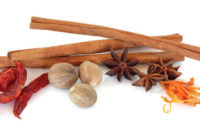Here, There, Everywhere
By Lynn Petrak
Supermarkets are stacking up tortilla sales, thanks to expanding product lines and merchandising programs that promote the products throughout stores.
Some say it’s round. Others think it flat. It spins the cycle of the day, and it spans multiple continents. No, it’s not the earth. It’s the tortilla! For a product that originated in Mexico thousands of years ago, the tortilla has become a worldwide phenomenon. It’s available throughout retail markets in the United States and abroad in an ever-increasing array of formats, from traditional flour and corn for purists, to more colorful, flavored tortillas to better-for-you options such as whole grain.
Just how mainstream has the tortilla become? Well, sales have doubled in the past decade, and the combined sales of tortillas in the foodservice and retail channels now are closing in on white bread. Sales of prepackaged white bread, while still atop the bread and bread-related category, are on a steady decline. Meanwhile, sales of tortillas continue to rise.
Dan Donovan, marketing assistant for Pittsburgh-based Giant Eagle, Inc., suggests that the media has made many ethnic foods mainstream over the years.
“Due to the increased popularity of food and food-related media such as The Food Network and specialty food magazines, many items not historically thought of as ‘mainstream’ have become just that,” he says. “Tortillas are certainly included in this group of ‘now mainstream’ items.”
Americans eat some 7 billion lb. of tortillas a year. Dollar-wise, supermarket sales of tortillas have reached the $1 billion mark, according to research from ACNielsen. Chicago-based market research firm Information Resources, Inc. pegs annual retail sales of hard and soft tortillas and tortilla kits at $962.9 million. According to IRI’s latest retail tracking survey, several of the nations’ leading brands have scored sales gains over the past year. And the Tortilla Industry Association estimates that total tortilla sales in retail and foodservice re approaching the $6 billion mark.
Consumers are picking up more tortillas for a variety of reasons. Concurrent drives for portability, taste, versatility and perceived healthfulness all favor tortillas, which are flavorful on their own or when used as carriers for fillers and toppings. They also are affordable and appealing to a culturally diverse range of shoppers.
“It’s got great crossover between traditional Latino consumers and Caucasian consumers,” says retail consultant Burt Flickinger, III, managing partner of Strategic Resource, Inc., New York. “It really is one of those food groups that appeals to every consumer constituency,”
What’s more, Flickinger says, tortilla products are as attractive to retailers as they are to consumers. “It’s still one of the fastest-growing categories because it’s cheap and it’s very high margin for manufacturers and retailers,” he says.
Major retail chains such as Bashas’ in Arizona are starting to make their own tortillas that they sell in their bakeries and under their brand name, Flickinger adds.
Rounding Up Merchandising
As a testament to the dynamic nature of the market, tortillas are commonly merchandised in multiple areas in a typical supermarket.
Because they still are staples in the Mexican diet, tortillas are sold in the Hispanic and international foods sections of many grocery stores next to items such as refried beans, bottled salsas and peppers. That aisle is often where local and regional tortillerias have a presence, alongside their national brand counterparts.
However, as tortillas gain a reputation as the next best thing — literally — since sliced bread, they also are starting to pop up in traditional bread aisles. Some retailers also merchandise tortillas in the refrigerated food case, adjacent to cheese and butter, depending on the product’s shelf life. That’s where Wild Oats displays its tortillas, according to Jonathan McParland, category manager for the Boulder, Co.-based chain of natural food markets.
“We carry tortillas that are refrigerated only, so most stores sell tortillas in the dairy department next to the fresh salsas and hummus,” he says.
|
Top 10 Hard/Soft Tortillas/Tacos Kits (Latest 52 weeks ending July 16, 2006) | |||||
| Rank | Brand | Dollar Sales (in millions) | Dollar Sales % Change | Dollar Share | Dollar Share Change |
| 1 | Guerrero | $191.1 | +8.6 | 19.8 | +1.7 |
| 2 | Mission | $166.0 | +4.3 | 17.2 | +0.8 |
| 3 | Old El Paso | $128.1 | -1.1 | 13.3 | -0.1 |
| 4 | Private Label | $79.5 | -3.7 | 8.3 | -0.3 |
| 5 | Tia Rosa | $40.7 | -5.8 | 4.2 | -0.2 |
| 6 | La Banderita | $30.8 | -0.2 | 3.2 | +0.0 |
| 7 | La Tortilla Factory | $28.1 | -3.1 | 2.9 | -0.1 |
| 8 | Ortega | $27.5 | +5.4 | 2.9 | +0.2 |
| 9 | Taco Bell | $20.9 | -12.2 | 2.2 | -0.3 |
| 10 | Mission Estilo Casero | $16.1 | -9.5 | 1.7 | -0.2 |
| Total* | $962.9 | -0.7 | 100.0 | 0.0 | |
| Source: Information Resources, Inc. Total U.S. — Supermarkets, drugstores and mass merchandisers (excluding Wal-Mart) | |||||
Beyond the ethnic and refrigerator sections, tortillas are merchandised in more creative ways. At one Albertsons-owned Jewel store near Chicago, for instance, packaged tortillas are stacked on an end-cap display near the refrigerated tortillas and a few aisles over from the Mexican food section, where they also are sold. In addition to their packaged form, tortillas can also be found as ingredients in meal solutions and dinner kits available in other parts of the supermarket. A line of low-carb South Beach wraps from Kraft Foods is one example, while Kraft’s Lunchables line includes a Chicken & Cheese Wrap and Ham & Cheese Wrap.
Meanwhile, heat-and-eat Mexican items made with tortillas are hot stuff in the freezer section, too. The El Monterey brand from Dinuba, Calif.-based Ruiz Foods, for instance, now includes several hand-held meals made with tortillas, such as frozen burritos, quesadillas, soft tacos and enchiladas, Meanwhile, other local and national brands have increased their freezer shelf space for similar products wrapped up with tortillas.
Back in grocery aisles, major brands such as Taco Bell and General Mills’ Old El Paso sell tortillas as part of meal kits for tacos, quesadillas, gorditas, enchiladas and the like, along with accompaniments like seasoning packages, sauces and salsas, and corn taco shells.
Meanwhile, supermarket chains such as Safeway, Marsh and Ukrops tout the signature wrap sandwiches in their meal solution and prepared foods areas.
According to Flickinger, retailers can add value to consumers and enhance their own margins by displaying tortillas across the store.
“Tortillas can be better in stimulating sales than bread, which historically has been a sales driver,” he says. “Tortillas stimulate sales in produce and meat and stimulate a lot of unplanned purchases. Because tortillas are something that can be used for breakfast lunch or dinner or in between lunch or dinner, they get shoppers in the store with greater frequency, too.”
Variety Show
Because tortillas are not relegated to just one part of the store, they are more visible to consumers, making them even more profitable for retailers. And it’s not just a white flour world anymore.
The basic flour tortillas remain tops, to be sure, outselling corn tortillas by a 2-to-1 margin, according to ACNielsen. That said, anyone who has passed by the grocery display or prepared foods area of a supermarket or specialty foods market can attest to the increasing availability of non-traditional tortillas.
Flavored tortillas, for instance, add a splash of color — and spice — to retail displays. Irving, Texas-based Mission Foods offers a retail tortilla line that includes zesty garlic-herb, sun-dried tomato-basil and garden spinach-herb varieties. La Tortilla Factory, Santa Rosa, Calif., does big business with its white flour tortillas, but also has developed rosemary wraps and tomato-basil wraps as part of its low-carb series.
Tortilla makers and retailers also recognize the significant and sure-to-grow segment of the population looking for products that fit their specialized diets, whether due to health, weight or allergy restrictions. La Tortilla Factory, for its part, supplies retailers with fat-free and carb-cutting tortillas. Mission Foods’ Mission Tortillas Plus! include 96% fat-free Heart Healthy and Carb Balance tortillas.
Consumer interest in whole grain or multigrain tortillas also is an area worth noting. Responding to consumer interest in high-fiber foods, manufacturers are adding more multigrain and whole wheat varieties to their lines. ACNielsen LabelTrends data shows that from 2004 to 2005, tortillas featuring whole grains on the label experienced a 73.4% sales jump.
At Wild Oats, better-for-you tortillas have been a hit among shoppers. The store carries a range of tortillas, including its own line of Wild Oat Brand Organic Tortillas and various fat-free, flour and gluten tortillas made with hemp flour, according to McParland.
“Whole wheat tortillas are our best sellers,” he says. “Whole wheat tortilla sales are significantly higher than sales of the standard flour tortillas.”
Giant Eagle’s Donovan also is seeing increased interest in whole grain tortillas and other better-for-you items.
“Traditionally, we carry our tortillas in our Nature’s Basket natural and organic departments, our deli departments and our worldwide foods aisle,” he says. “All of our tortillas are sourced from national companies.”


